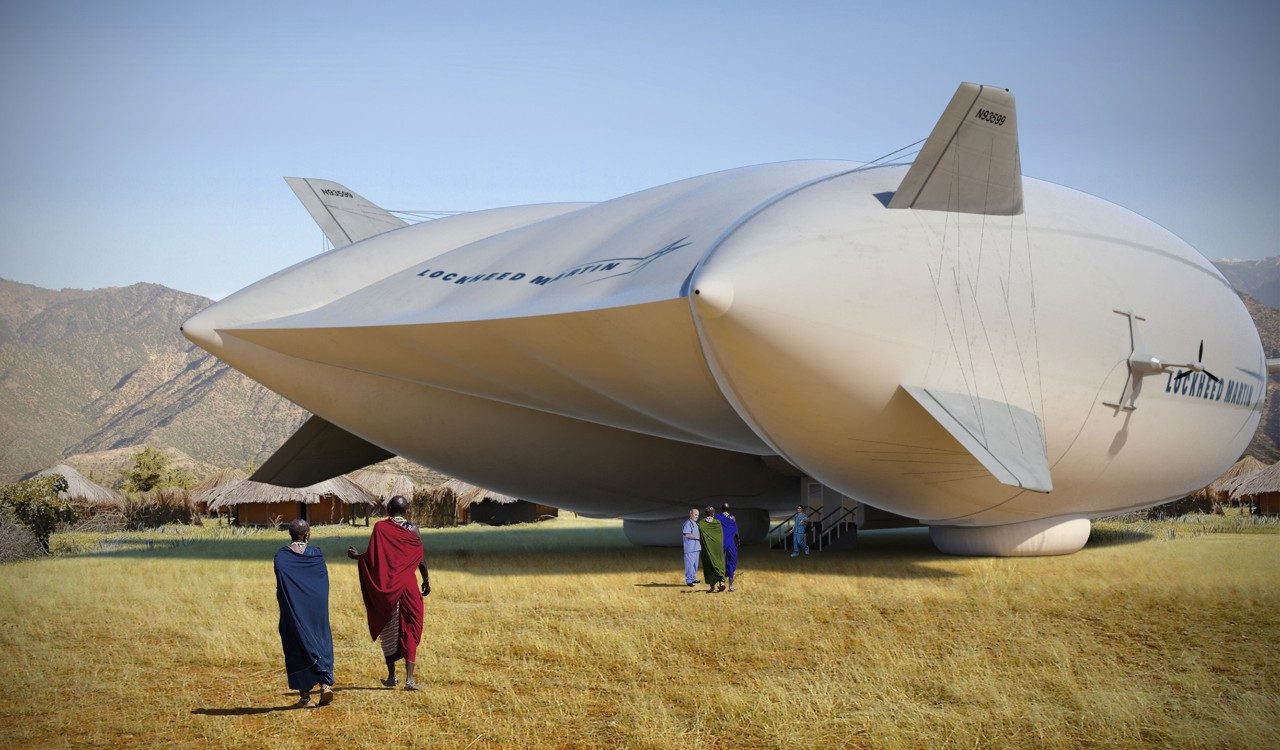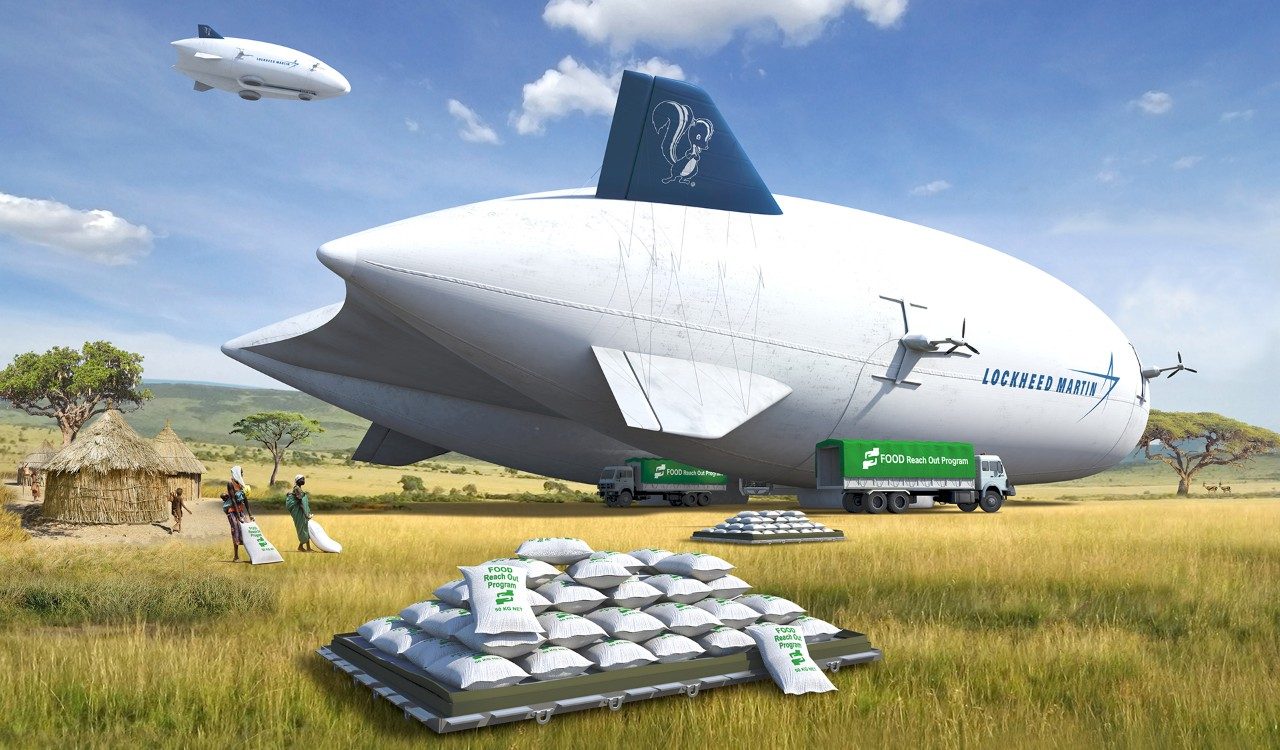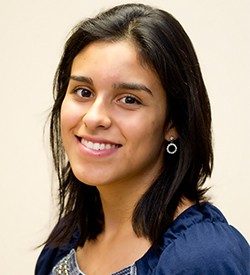What is a hovercraft? It’s part boat, part airplane and part helicopter. While it may look a bit odd, how it works is quite simple. It’s an amphibious vehicle that travels on a cushion of air created by a downward blast. Hovercraft use air to balance their weight, allowing the craft to operate efficiently. Hovercraft can also operate across nearly any terrain, including land, water and ice.
It’s this characteristic that makes hovercraft technology the ideal match for the Hybrid Airship, the cargo-hauling ship of the skies, enabling the airship to access remote locations around the world.
ACLS: Where Hovercraft Technology Meets The Hybrid Airship

From carrying heavy equipment to isolated regions of Alaska, to serving as a flying clinic for disaster-relief efforts, there is almost no cargo mission this ship can’t perform. This is due to the fact that the airship can land nearly anywhere. What gives the Hybrid Airship this capability? The air cushion landing system (ACLS).
The ACLS looks like giant inflatable doughnuts on the bottom of a large blimp, and it makes the challenge of accessing remote regions around the globe a thing of the past. Lockheed Martin Skunk Works® developed an ACLS that blends hovercraft technology with our airship design.
“One of the biggest challenges to traditional cargo airship operations is how and where you park the airship,” said hybrid design program manager, Dr. Bob Boyd. “It’s very expensive and time consuming to develop infrastructure in remote areas around the world. The ACLS allows the Hybrid Airship to access these isolated regions without needing to build any runway or roads.”
The ACLS system consists of three underbody hoverpads. These hoverpads create a cushion of air that allows the airship to float along the ground nearly friction free. The system gives the Hybrid Airship a unique capability to hover over water – a capability unmatched by any other cargo-hauling air vehicle.

If the Hybrid Airship needs to park on land, that’s not a problem either. As the airship taxis, the hoverpads ‘grip’ to the ground with light suction pressure to keep the airship from moving in variable winds.
‘Fingers’ hang below the pads to create a seal with the ground. These fingers allow the airship to taxi over obstacles, such as tree stumps or rocks, so extensive site preparation is not needed for a high volume cargo operation. These ‘fingers’ also make the hovercraft a sustainable solution because there is no long-term impact to the ground site.
With this innovative system, the Hybrid Airship is able to travel virtually anywhere and affordably stay there.
Opening a World of Possibilities

More than two-thirds of the world’s land and more than half the world’s population have no direct access to paved roads. This lack of infrastructure presents challenges to accessing these isolated regions.
Imagine a world where virtually any place can be reached. Medical equipment, food and aid workers can be sent to aid disaster-relief efforts, and essential health outreach programs in developing nations around the world can constantly receive the resources they need.
The ACLS makes this idea a reality. The Hybrid Airship uses a combination of technologies to allow us to provide service in the most remote areas, opening a new world of possibilities.
Engineer Spotlight: Meet A Skunk

For more than 70 years, Skunk Works has created revolutionary aircraft and technologies that push the boundaries of what is possible. What has been key to Skunk Works’ success? A group of “Skunks” – some of the most innovative, strategic and visionary thinkers around.
Cheryl Limas, software engineer, is one of these brave “Skunks”. As part of the Lockheed Martin Skunk Works team, Limas aids the development of software centric systems, such as the one-of-a-kind autonomous robot, SPIDER, that locates and patches tiny holes found in the Hybrid Airship’s envelope.
Her enthusiasm for supporting our service members brought Limas to Lockheed Martin. With Skunk Works’ legacy of technological achievement, Limas knew she wanted to be part of the team advancing the state of flight and technology.
“During my time at Lockheed Martin, I have been able to meet a variety of intelligent professionals that have helped aid my development as a young female engineer,” shared Limas. “I am fortunate to be mentored by, learn from, and work alongside this group of experienced and highly talented individuals.”
While there’s no sole recipe for a career at Skunk Works, Limas recommends taking advantage of every opportunity that is presented. You never know what experience might set you apart and help you in the future.




